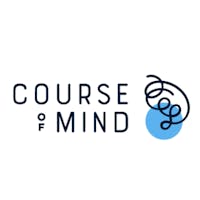Spread across more than 40 individual buildings, Rockford Public Schools is the third largest school district in Illinois. As Educational Technology Director for the entire district, Susan Uram is responsible for ensuring that roughly 28,000 students and their teachers have access to the most impactful learning technology available.
After 22 years as a classroom teacher, plus time spent as an instructional coach and curriculum designer, Uram took on this new position just three years ago, when it was first created. Passionate about the intentional integration of technology, she views the role as essential to amplifying learning and a key element in her district’s five-year plan to increase the overall graduation rate from 60 percent to 75. Here, she explains how Course of Mind: ISTE’s learning sciences initiative factors into that ambitious plan.
EdSurge: Why did you enroll in the Launch into Learning Sciences course?
Uram: What I think brought it all to a point of having to be consolidated and focused was the SOPPA law. That really forced all stakeholders to the table to say, "Well, what tools do we use with our kids? Why do we use them?" We're starting to understand that we are dealing with student data every time we put kids online.
And the instructional icing on the cake is that this forced us to reflect. This new law, I think, really made everybody sit up and say, "We all play a role in this," right down to the teacher who is making a decision to put their students on a particular site. That decision really shouldn't just be based on data privacy; it should be based on instructional value as well.
And that's where Course of Mind came in. It was exactly what we needed: something to help us objectively understand and evaluate the alignment and the value of a tool in our system. This course, in particular, and this whole process has made me feel less isolated in those endeavors.
How would you describe your district’s approach to edtech procurement prior to enrolling in this course?
It was the ‘Wild West’ of purchasing. With as many buildings as we have, and every building having separate contracts and different digital vendors, schools were making decisions in a silo. There was no collaboration internally that handled any filtering, or reflection, or discussion, or cross-referencing.
Historically, we didn’t give much thought to accessibility or equity components in these tools either. That's definitely something that we're thinking about now. Being one-to-one now means that there shouldn't be anything in the way of kids accessing their learning. And that's where, honestly, the pandemic has done great things for education in many ways. It’s forcing us to reflect on old practices and embrace new ideas rather than continue with the status quo. We get a fresh start because we have to look at things in a different way. There was never that connection between understanding the process of learning deeply enough to be able to apply it in how you evaluate something.
Which aspects of the course have been most relevant or useful to you?
We talked about how the brain learns, in terms of committing things to memory and creating an understanding that can be applied in new situations—the mechanical part of learning. And that took away some of the emotional aspects of decision making. It really forces you into something more objective. Rather than simply say, "This looks fun or different," or, "The kids like to play it," we should consider whether the tool supports the learning process.
I also enjoyed talking about what motivates our learning. If kids like doing something, that's great, we're happy, but does it create long-term motivation around the learning and the content, or just around an avatar and some points, for example? As a system, we need to focus on what’s really going to enhance the instruction when deciding whether a tool is right or not.
And there was a part in the course about things that a platform can do, such as concrete examples, retrieval practice and spaced-out practice. These are things that, as teachers, we might just be putting into our instruction, but we weren't necessarily expecting the same of a digital tool. But why wouldn't we? Why can't we?
We really have to evolve our thinking around how we teach and what we teach, but still root it back to the mechanics of the brain, the individual student and their ability to retain and apply that information in a meaningful way.
Practically speaking, how might your experience with the course change your district's approach to procurement in the future?
In laying out the whole process, from finding something that you think you need to implementing it, there are all these steps along the way. What we need is to be able to tie things together in such a way that it's about the deeper learning. But how do we communicate this to our teachers in a digestible way? They don't have time to sit down and take this course, but we need them to start to see the ‘why’ behind being able to reflect and carefully evaluate what we adopt.
Right now, we're seeing a change from that ‘Wild West’ to what probably feels like a very restrictive environment for a teacher. It's not meant to cut off their innovation or deny them the things they think they need, but it's hopefully furthering a collaborative conversation around what's best for the student and for the learning. And that's where we need a lot of help—to get a more concrete way to convey why we're doing this. I want teachers to still bring new tools forward, and I want them to know that they're going to be given a thoughtful review and consideration based on the facts of the science of learning, the idea of how the brain works and how a tool may complement that.
Our first step is to get something as transparent as possible within the district as to how we decide what we move forward with. Then, we have systems of teacher leaders, curriculum leaders, principals who join these conversations. So, it's not just a disconnected admin decision; it's something that we make together, consulting each other. That's where we circle in the big conversation around equity and curriculum alignment. I think we do have to take into account that collective responsibility to own our children as a group.
Let’s talk about your experience with Course of Mind’s coaching. What do you expect to accomplish with this support?
In our sessions, we’ll be completely focused on our problem of practice and creating a rubric, a way to convey the ‘why’ to our stakeholders and explain how we're transitioning to this system. So, that's what I'm anticipating.
I'm pretty optimistic that we can walk away after two coaching sessions with a pretty fleshed-out first draft of that rubric. Then, we can take that to our different stakeholders—some principals, our instructional council, some team teachers—take a little tour around the district and test the waters on it. I'm hoping after the first conversation, we can create something that we can take on tour so that, in the second session, we can bring that back and say, "This is what people liked and didn't like. How are we going to mitigate those changes and make sure that we're getting to what's really good for the district?"
With our district focusing on continuous improvement, we are always striving to reflect and evolve our practices. We've already started some of those collaborations. And we're starting to see the benefits.



